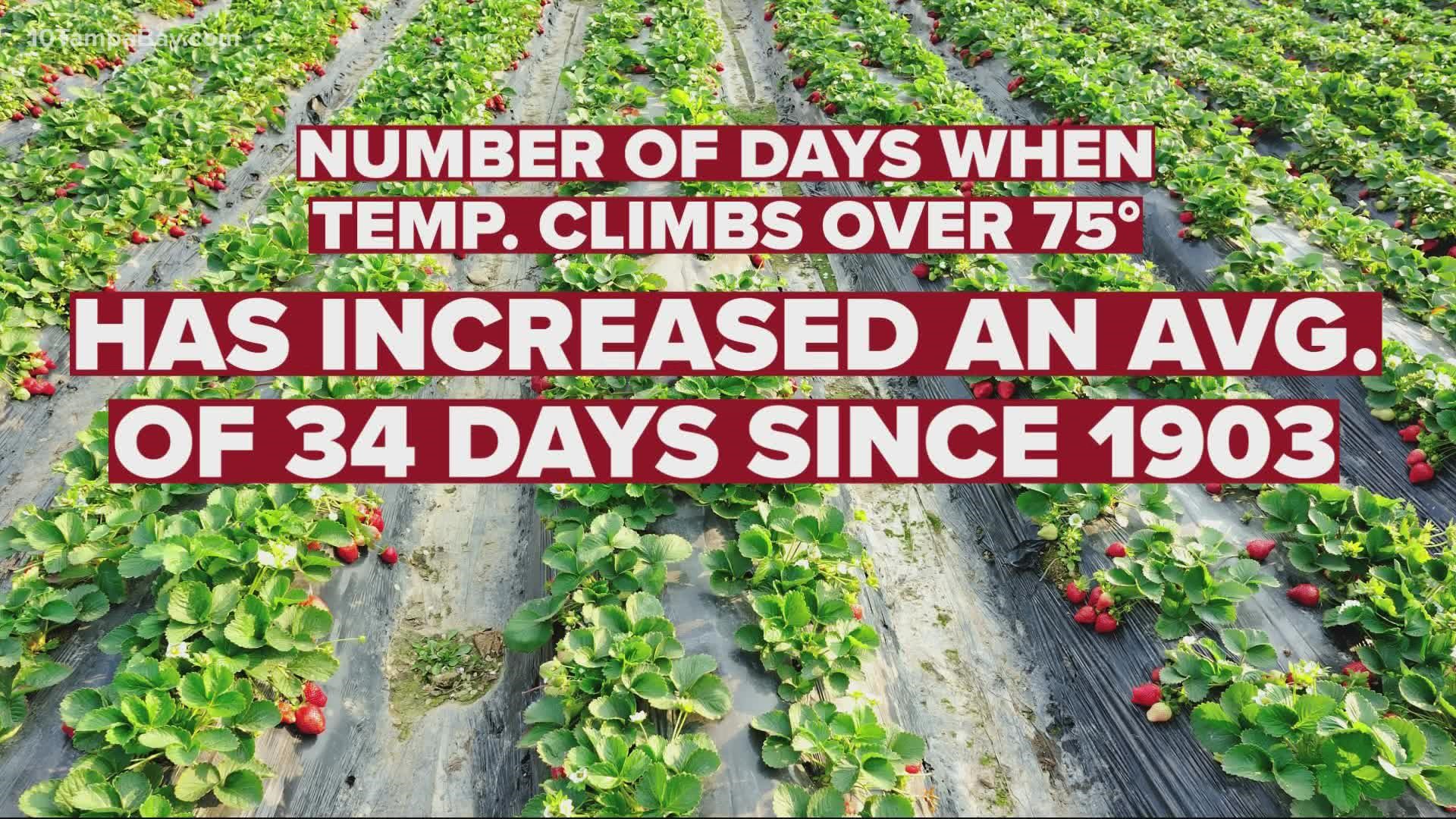PLANT CITY, Fla. — The Florida Strawberry Festival in Plant City is still more than three months away, but strawberry farmers are already preparing for the celebration.
In order for those strawberries to be as delicious as possible, paying attention to the weather is critical and that starts with when to plant. With the summer heat now extending from September into October, that time has been pushed later in the season.
Our warmer, changing climate is forcing farmers to make changes themselves.
“A few years ago, late September you would have seen that we would pretty much have all our crop in the ground, " Nick Wishnatzki, the public relations manager at Wish Farms, said.
“If we had planted them like business as usual, there would have been an impact to yield because the plants go vegetative and produce less fruit.”
With 2,100 acres of farmland in Florida, Wish Farms has been growing strawberries for nearly a century. The last six years in Plant City, however, have all been in the top 10 hottest Septembers on record dating back to 1842.
In fact, the average date that temperatures drop to 65 degrees or cooler for the first time, has moved from Sept. 15 in 1903 to Oct. 10 — 25 days later.
Farmers have had to delay planting dates saying, “plants need a certain amount of chill hours on them, that if they get shocked with heat, that would be really bad for the plant."
Flower and fruit production starts in November and continues into April or May. Good strawberry development, not surprisingly, is dependent on good weather.
"Berries like cool nights and warmer days so nights in the 50s and 60s, then weather during the day about 75 is just perfect," Wishnatzki said.
With climate change, however, the number of days when temperatures climb above 75 degrees during this delicate growing season has increased an average of 34 days since 1903. Wishnatzki explains that’s why they also must run water later in the year to keep the berries cool.
Paying attention to our changing climate has allowed farmers to adapt their practices and even develop a new berry variety.
New this year, you’ll start to see in grocery stores the Pink-A-Boo Pineberry developed by the University of Florida. It has a pink blush when it turns ripe with the essence of pineapple or pear and a peach texture.
"This particular variety is really good for Florida with the climate and the weather that we have here," Wishnatzki said.

